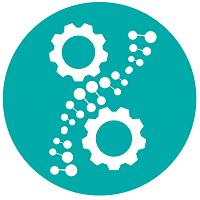Manufacturing & Analytical Characterization
Symposium: Predictive Tools and Applications in Manufacturing and Product Quality 1
Granulation Process Scaleup Using Growth Regime Mapping and Multivariate Modeling
Wednesday, November 12, 2025
9:30 AM - 10:00 AM CT
Location: 301 ABC

Rajesh Annesh Kulkarni, MS
Sr. Research Advisor
Eli Lilly and Company
Indianapolis, Indiana
Speaker(s)
In this talk, I will briefly introduce a granule growth regime map to highlight its usefulness for a mechanistic understanding of high shear wet granulation (HSWG). I will then focus on process scaleup challenges and limitations of current models to scale up from laboratory to large industrial scale granulators. This will be followed by a case study where a hybrid model was developed using two granule growth dimensionless numbers — granule pore saturation and Stokes deformation number — coupled with an empirical multivariate process model. Laboratory scale (1 L) experimental data was used to define empirical boundary conditions which were linked to material attributes (granule porosity) affecting tablet critical quality attributes. The granule porosity at the end of granulation was obtained from a multivariate partial least squares (PLS) model based on impeller Froude number, liquid-to-solid ratio, liquid spray rate, wet massing time, and impeller diameter (as a measure of the granulator scale) as input variables. The PLS model was initially built with 1 L scale data and then updated with the experiments at the larger scales (10 L, 300 L, 800 L) as more data became available. The granule porosity predicted from the PLS model was used determine if a batch is within the empirical bounds determined in the 1 L experiments.
Learning Objectives:
- Describe granule growth regime map using Pore Saturation and Stokes Deformation
- Define boundary conditions using lab scale granulator and linkage to granule attribute (porosity/density)
- Develop a predictive regime map to scale up the process to industrial 300 and 800L scales

